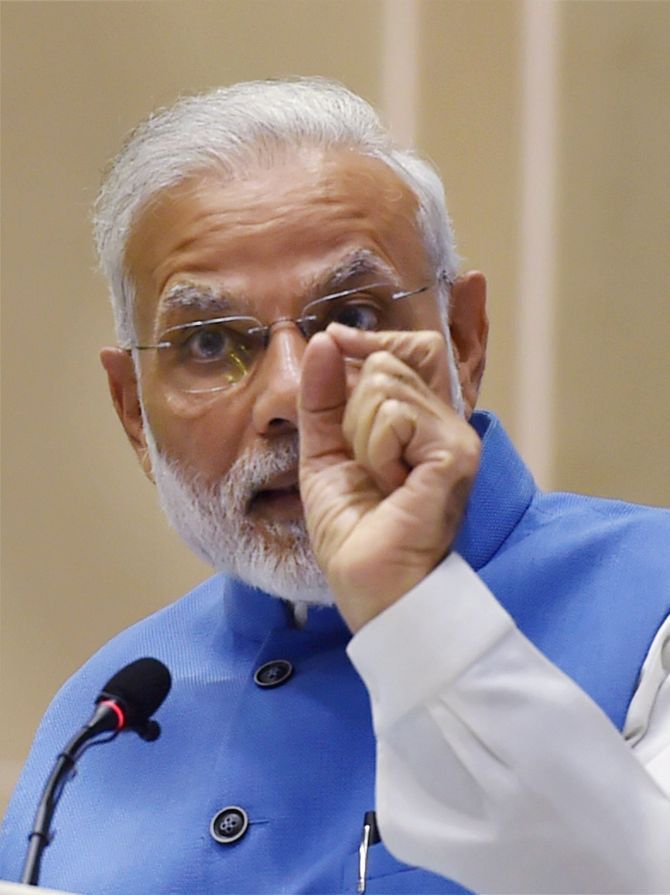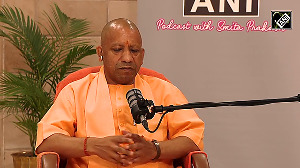 Demonetisation will wipe out the likely benefits of a good monsoon this year, says Christopher Wood of CLSA.
Demonetisation will wipe out the likely benefits of a good monsoon this year, says Christopher Wood of CLSA.
It has been a double whammy for the Indian financial markets in the past few days.
The Indian government’s demonetisation move, as well as the outcome of the US Presidential elections, have taken them by surprise. Christopher Wood, managing director & equity strategist, CLSA, tells Puneet Wadhwa that retail investors should take the opportunity to buy real estate.
“From a six-month viewpoint, we would not be overweight Indian equities, as everyone is expecting a big economic slowdown following the demonetisation move,” he says.
What are your views on the Indian government’s demonetisation move?
This announcement coincided with the outcome of the US presidential elections. So, globally, I don’t think this move has generated the attention it would otherwise have.
From a financial market perspective, the move is positive for bonds and negative for stocks. Assuming that the economy will slow down in the next six months, the property/real estate sector will be hit hard.
How long will the slowdown last?
I think the slowdown is going to last for at least six months. I personally think the demonetisation step is an amazing move, and a bold one. It is also amazing that the government was able to keep it as a well-guarded secret.
Now, the question is how quickly the government can get the new money in circulation. Reports say the government plans to restore normalcy in about two weeks, which is a key factor.
It is a short-term pain for long-term gain. By short term, I mean six months.
Do you think that the move was ill-timed and could have been done when financial inclusion in the country was slightly deeper?
Well, Modi is already halfway through his term, and such a thing couldn’t have been left for too late, or too close to the next general elections. The Indian economy needs to recover before the next general elections. There is nothing like a ‘perfect timing’ for such a move.
How does India stand now, given its fundamentals in the global equity landscape?
What is working in favour of India is the bond market. The recent nervousness in global markets is the bond sell-off. On that basis, India looks good.
Still, from a more tactical perspective, the action in the US dollar will be critical for the emerging-market asset class, debt and equity.
Do you think the recent government diktat on denomination of the rupee can abruptly end the consumption story in India?
Yes, that’s all gone. The economy will be vulnerable, particularly the rural areas, which are where cash is used the most. In terms of GDP growth, our view is that the demonetisation move by the government will wipe out the likely benefits of a good monsoon this year.
The dent on GDP (gross domestic product) growth will be 50-100 basis points (bps). The key in this for me is the impact on the property/real estate market.
So are you cutting your weight on India in your global portfolio, given the uncertainty?
I will not cut my weight on India due to this move, because if the pain is only for six months, it is not a big deal, keeping in mind the long-term potential.
Overall, this is a positive move by the Narendra Modi government. Though it is not a short-term positive, there are gains to be had over the long term. The demonetisation move is just another confirmation that Modi is trying to fundamentally reform India.
However, from a six-month viewpoint, we would not be overweight Indian equities, as everyone is expecting a big economic slowdown after the demonetisation move.
You had been bullish on the Indian real estate segment for quite a while. Will you alter your stand now?
If one is a short-term investor -- say, three months -- one should remove all real estate, cement and housing finance companies from the portfolio; these sectors are hit the hardest.
The irony is that the market was already weak; and the real estate market might weaken further. In terms of sectors, our view is that real estate will be hit the hardest. It will be followed by consumer durables and automobiles, and the consumer staples (FMCG).
Going ahead, defensive plays like pharmaceuticals will do well. One can still make a good return from real estate, housing and cement stocks over the long term, but the bottom may still be three-six months away from here on.
What more would you like to see from the government in its remaining tenure, in terms of policy action/reforms?
At present, the key missing link as regards the government is the same as last year -- the banking system. While there is some progress, the issue is that the government has not recapitalised public sector banks (PSBs) in the way we would have liked. That’s the key missing link.
The risk after Raghuram Rajan exiting early is that it delays the clean-up process for public-sector banks. On the other hand, I think Rajan was being too tight as regards his monetary policy; credit growth has slowed a lot. There was more room to cut rates.
What is your advice to retail investors after the recent developments?
For someone who has cash in a bank, it is a good time to enter the property/real estate segment, as the prices are likely to drop further and may bottom out over the next six months. For someone who has cash in hand, I suggest they go find an accountant!
How are the corporate earnings in the Indian context shaping up against expectations?
Corporate earnings were looking quite positive due to the base effect. But now, everything has to be recalibrated. A pick-up in corporate earnings will be delayed. Our house view is that the earnings growth in the second half of 2016-17 will be 12 per cent to 14 per cent (against 18-20 per cent earlier). Our 2016-17 estimates now stand at 10-12 per cent, while 2017-18 estimates are 15-18 per cent.
How much room does the Reserve Bank of India have to cut rates further?
I think the currency will remain stable, so there will be room for RBI to cut rates further. The problem, though, is that the US Fed might raise rates. I think the Indian central bank would have cut rates again by the year-end, but it looks a bit difficult now, given a rally in the US dollar.
Donald Trump’s victory took the global financial markets by surprise. What is your interpretation of the development, and the outlook for global equity markets against this backdrop?
The consequences of the US election result could be momentous in the sense that Donald Trump has every intention of pursuing an aggressively pro-growth policy. The focus on growth is why the market reaction -- falling bonds and rising stock prices -- ultimately makes sense.
This is the opposite of the market action that was happening in Asia last week, when it first became clear that ‘The Donald’ was on course for a victory. Then, stocks sold off sharply and bonds rallied in a classic ‘risk-off’ market action.
Trump now has 10 weeks to calm markets before his presidency. It will be much easier for him to implement his pro-growth agenda if a comparative bond market calm can be maintained.
Do you think that the US Federal Reserve will raise rates in December?
After last Friday’s data, with average hourly earnings growth accelerating to 2.8% year-on-year in October, a rate hike by the US Fed in December now seems ‘baked in the cake’. Still, the Trump victory, and a continuation of a strong dollar and rising bond yields, would imply a tightening of monetary conditions, something that will not be welcomed by the US Fed.
But the base case now must be for a US Fed rate hike in December, unless equities sell off sharply in the interim.












 © 2025
© 2025